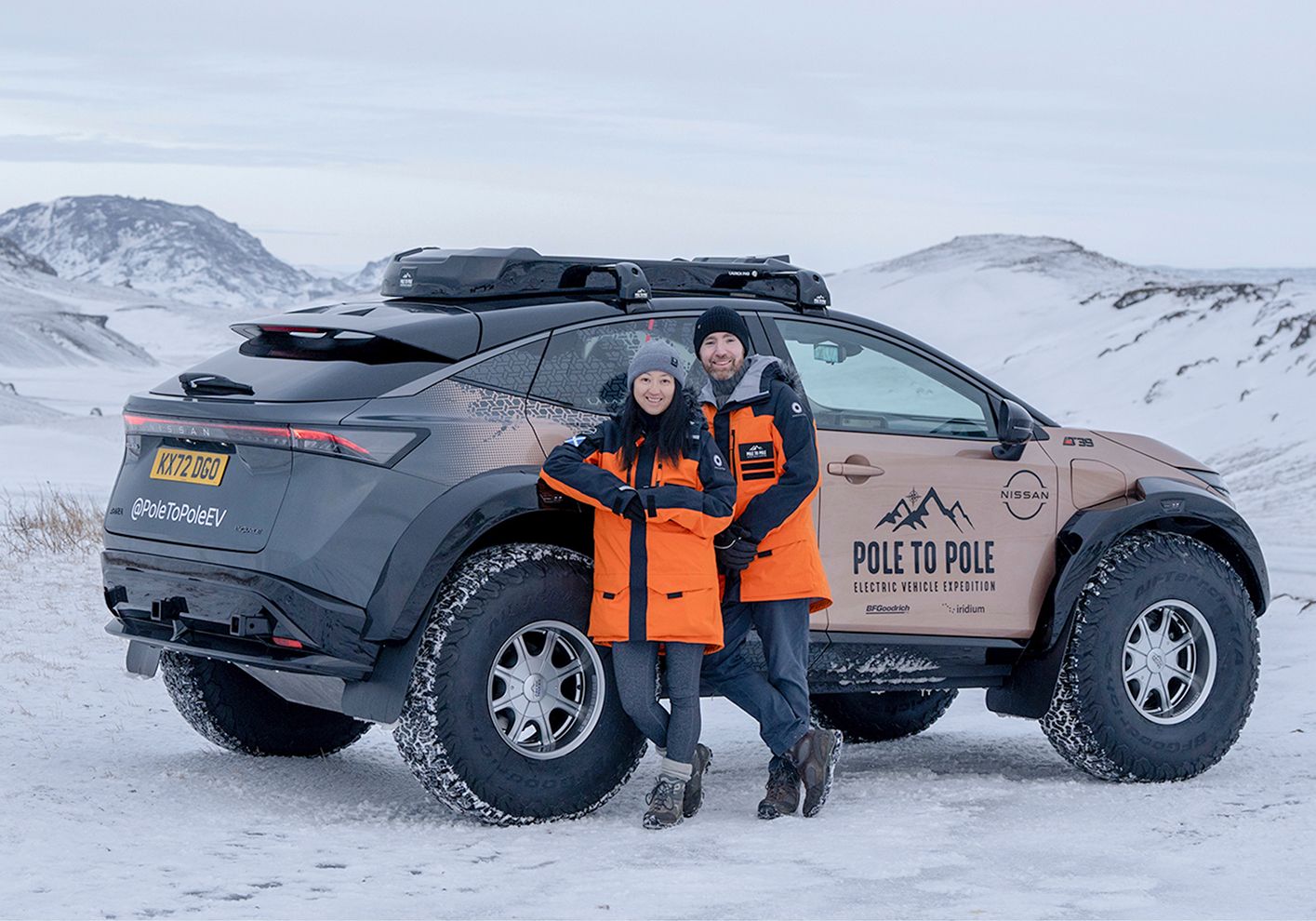WORDS
Nick Smith
This month sees Chris and Julie Ramsey attempt the first motorised vehicle expedition from the North to the South Pole. No car has successfully made the journey before, and the husband-and wife team will be doing it in an EV, or electric vehicle. The Ramseys will drive a 17,000-mile route ‘as sustainably as possible’, passing through 14 countries and crossing three continents. Chris says that the expedition will cover the globe’s most hostile environments to ‘raise awareness of the climate crisis and the role electric vehicles can play in reducing our carbon footprint’.
Of course, you can’t drive from the top of the world to the bottom without crossing water, and because their modified Nissan Ariya e-4ORCE doesn’t “swim”, exceptions need to be factored into the route planning. Chris explains that the expedition’s departure point is an ‘established north magnetic pole location’ – a place on terra firma where the magnetic pole has been recorded historically. Given that the magnetic pole – unlike the geographic pole, which is fixed – wanders the top of the world in response to “flux lobe elongation”, it’s an advantage to select a land-based North Pole site as your starting line.

Chris and Julie’s endpoint is more straightforward as it’s the South Geographical Pole, or 90 degrees south, which is, and always has been, on dry, if icy, land. To get to Antarctica, the Ramseys must drive to the world’s southernmost city – Ushuaia in Argentina – after which they’ll motor to Punta Arenas in Chile, from where their EV will be air-freighted to the Union Glacier airbase on the White Continent. This flight inevitably increases the Ramseys’ carbon footprint, ‘but no expedition can eliminate emissions completely. There’s no way of getting the car into Antarctica without this plane’.
If route-planning presents the team with something of a headache, the challenge of keeping the vehicle charged is a full-on logistical migraine. Even in urban conditions, charging is the biggest roadblock to EV domestic take-up, but when faced with the prospect of driving through tundra, desert, prairie and polar icecap, the ‘idea of relying on existing infrastructure in a vast expanse of nowhere made no sense at all’.
So the Ramseys have decided to take their charging technology with them. Which means that the Ariya e-4ORCE will be towing a trailer-mounted 5-kilowatt static wind turbine, ‘like those you see on the hillside (only smaller), so that we can harness wind energy. Plus, we’ll have solar energy from portable panels. We’ve designed an interface that allows this energy to communicate and work directly with the car.’ Chris explains that there will be plenty of pit stops along the way: ‘You can’t drive 12 hours per day every day without a break or two. But we have a saying that when we stop to rest, the car eats first.’
Chris grew up with posters of Ferraris and Lamborghinis on his bedroom wall, knowing nothing of electric cars. He remembers discovering them by accident while researching renewable energy for his job in Aberdeen’s petrochemical industry. Captivated by the instant torque of the electric motor, he concluded that the power was “insane”. To test his faith, he set off on an 1,800-mile road trip around the UK over the course of a gruelling weekend. Then he bagged the Guinness World Record for the furthest distance travelled on an electric bicycle over 12 hours. Using a Volt Pulse hybrid e-bike, Chris covered 180.75 miles at an average speed of 16.5mph. In 2017, he entered his own Nissan Leaf in the Mongol Rally, becoming the first driver of an EV to compete in the 10,000-mile race.
The Pole to Pole EV Expedition will take the Ramseys eight months. They could do it quicker, but the “Ice Trucker” road in Canada closes in April, and you can’t drive in Antarctica until early December. ‘Along the way we’ll call into renewable energy sites,’ he explains, ‘to spread the word and find out what’s going on in the world.’
Follow the Pole to Pole EV Expedition at poletopoleev.com





